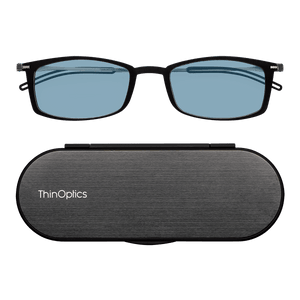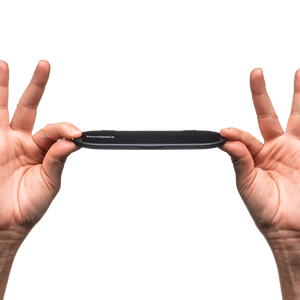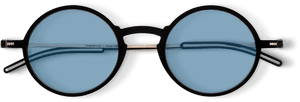What is Digital Eye Strain?

What is Digital Eye Strain?
If you’re experiencing eye discomfort & fatigue, dry eye, blurry vision, or headaches, you might be asking yourself, “What’s wrong with my eyes? Do I need glasses?”
If you’re experiencing these symptoms because you’re spending lots of time in front of your computer, on your phone, tablet or e-reader, then you might be suffering from Digital Eye Strain (DES).

What are the symptoms of Digital Eye Strain?
The term “digital eye strain” is both specific and vague, so it’s helpful to list the symptoms of digital eye strain to gain a better understanding of what to look for if you think you might be suffering from DES.
Among the most common symptoms of digital eye strain are blurred vision, double vision, dry eyes, and general eye discomfort & fatigue. Other symptoms of DES to watch out for are itchy & red eyes that tear up frequently.
Who is at risk for Digital Eye Strain?
It’s common to think that only “old” people have vision problems or issue with their eyes, but the truth is that anyone who is spending lots of time in front of a digital display (desktop & laptop computers, tablets, e-readers and cell phones) is at risk of developing symptoms consistent with digital eye strain.
Uncorrected, pre-existing vision problems can increase the severity of DES, so if you’re already suffering from a vision problem, you’ll want to take extra care to avoid exacerbating those problems.
Additionally, if you’re viewing your electronic devices from the wrong angle, with bad posture, or while wearing a pair of reading glasses that aren’t right for your eyes, you could be at risk for digital eye strain, as well.

What is the treatment for Digital Eye Strain?
Most of the symptoms of DES tend to decrease after stopping use of your digital device. But for many, that’s not very realistic because of the necessity to use digital devices for work. Even after ceasing electronic device activity, some people may continue to experience diminished visual capabilities like blurred vision. If nothing is done to address the cause of the problem, the symptoms will continue to recur and perhaps worsen with future digital screen use. For this, you should seek the advice of a doctor or other eyecare professional.
Will Blue Light Blocking Glasses Help My Digital Eye Strain?
Blue light blocking glasses are a great way to exercise preventative maintenance with your eyes – especially if you’re spending the bulk of your time in front of your computer. Blue light blocking glasses effectively block the transmission of a range of blue light wavelengths emitted from devices before they get to your eyes. This not only puts less strain on your eyes, but also avoids the other pitfall of blue light, which is wakefulness.Digital devices emit artificial blue light, while our sun emits natural blue light. As a species, we rely on the sun to regulate our circadian rhythms, but when we’re exposed to artificial blue light, our circadian rhythms are thrown out of whack, resulting in difficulty falling asleep or restless sleep. Coupled with the other symptoms of DES mentioned above, this sounds like something we’d all like to avoid!
























